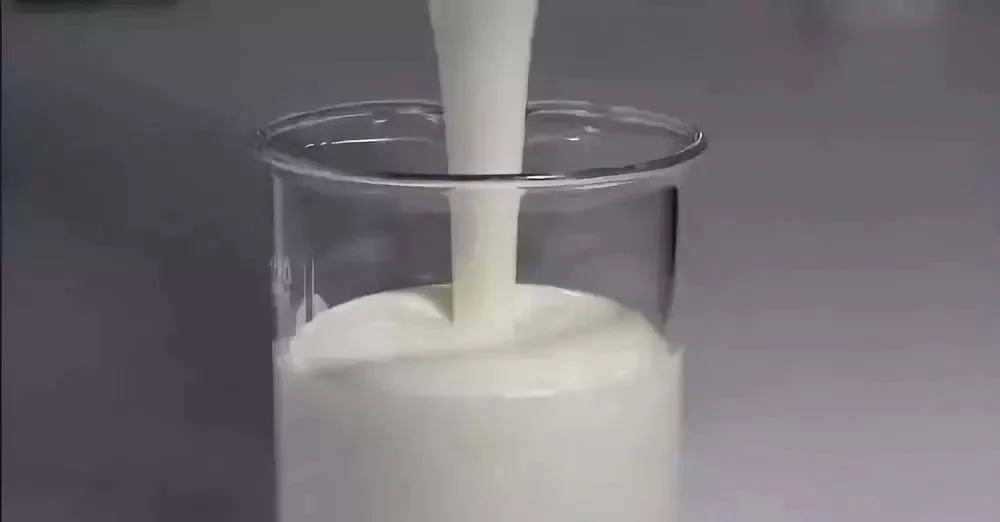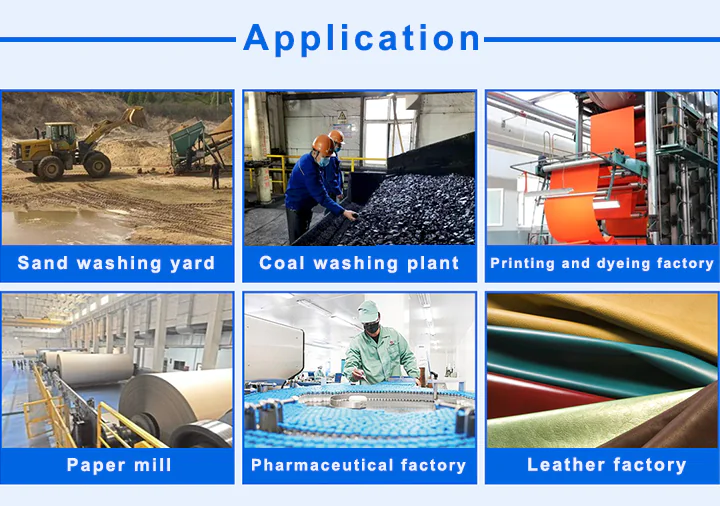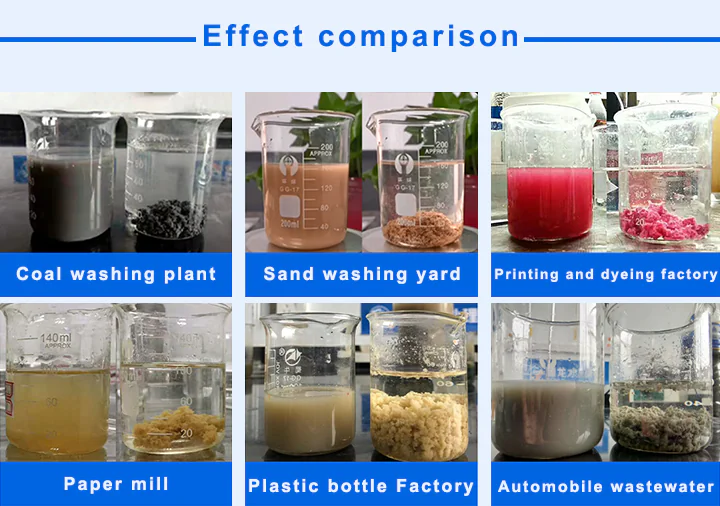Polyacrylamide (PAM) is a key flocculant and thickener used in water treatment, environmental protection, papermaking, and oil extraction. How many types of PAM are there, and how do you choose the right one? This article will explain PAM’s properties, including its form, ion type, polymerization process, and hydrolysis methods, to help you make the best choice for your application.
Forms of Polyacrylamide (PAM): Solid vs. Liquid
1.Solid PAM: Granular & Powder
- Granular PAM: Larger particles, suitable for fast-moving water, dissolves more slowly.
- Powder PAM: Finer particles, dissolves quickly, easier to disperse.
2.Liquid PAM: Four Main Types
- Oil-in-water Emulsion (O/W): Water dispersed in oil, fast dissolving, suitable for automatic dosing systems.
- Suspension Emulsion: High solid content, excellent flocculation performance, used for specific processes.
- Water-in-water Emulsion (W/W): Stable, easy to store, widely used in certain water treatment processes.
- Solution PAM: Ready to use, no need to dissolve, ideal for quick treatment needs.

Ion Type Classification: Anionic, Cationic, Nonionic, and Amphoteric PAM
1.Anionic PAM (APAM) — For High Suspended Solids Wastewater
- Mainly used in industrial wastewater treatment, mining, papermaking, oil extraction, etc.
- Divided into:
- Low hydrolysis (5%~15%)
- Medium hydrolysis (23%~27%)
- High hydrolysis (28%+), higher viscosity, suitable for high turbidity wastewater.
2.Cationic PAM (CPAM) — For Organic Sludge Dewatering
- Used in sludge dewatering, municipal wastewater treatment, papermaking, etc.
- Divided by ion degree:
- Low ion degree (10%~20%)
- Medium ion degree (30%~40%)
- High ion degree (50%~80%), suitable for high organic content sludge.
3.Nonionic PAM (NPAM) — For Weak Acidic or Neutral Wastewater
- Used in textile dyeing, metallurgy wastewater, and other special industries.
- No hydrolysis, suitable for high turbidity water treatment.
4.Amphoteric PAM — Combines Anionic and Cationic Properties
- Suitable for complex water quality and oilfield chemical treatments, combining the advantages of both anionic and cationic.

PAM Polymerization Process: Homopolymer vs. Copolymer
- Homopolymer PAM: Made by polymerizing only acrylamide (AM) monomer, commonly used in general flocculant products.
- Copolymer PAM: Made by reacting acrylamide (AM) with acrylic acid (AA).
- Binary Copolymer: Two materials combined, like AM + AA (Anionic PAM).
- Ternary Copolymer: Three materials combined, enhancing stability and performance.
- Cationic PAM often uses binary or ternary copolymer processes to improve flocculation and adaptability.
PAM Hydrolysis Process: Pre-hydrolysis vs. Post-hydrolysis
- Pre-hydrolysis PAM: Alkali is added during polymerization, forming anionic PAM, with lower viscosity, suitable for general wastewater treatment.
- Post-hydrolysis PAM (High Viscosity PAM): Alkali is added after polymerization, resulting in higher viscosity, suitable for special cases like high turbidity mining wastewater.
Special Modified PAM: Functional Monomers for Performance Upgrade
In PAM production, functional monomers like sodium or potassium salts of polyacrylamide can be added to enhance its range of use. For example:
- PAM Sodium Salt: Increases water solubility and dispersibility.
- PAM Potassium Salt: Improves salt resistance, suitable for high salinity wastewater treatment.
How to Choose the Right PAM?
💡 Selection Principles:
- Water Quality: Choose APAM for high suspended solids, CPAM for organic sludge, NPAM for weak acidic wastewater.
- Target Use: Choose high ion degree CPAM for sludge dewatering, medium hydrolysis APAM for flocculation and settling.
- Operating Process: Choose emulsion PAM for quick dissolution, powder PAM for precise dosing.
✅ The diversity of PAM makes it widely applicable! Understanding the different types of PAM helps businesses in water treatment, sludge dewatering, papermaking, oil extraction, and more, find the right product to improve efficiency and reduce costs!

Conclusion: PAM is the “Universal Additive” in the Water Treatment Industry!
There are many types of polyacrylamide, each with different forms, ion types, and polymerization processes, suitable for various water treatment processes. Choosing the right PAM can improve treatment efficiency, reduce costs, and optimize production!
If you’re looking for the right PAM product, feel free to contact us. We’ll provide professional water treatment solutions!
